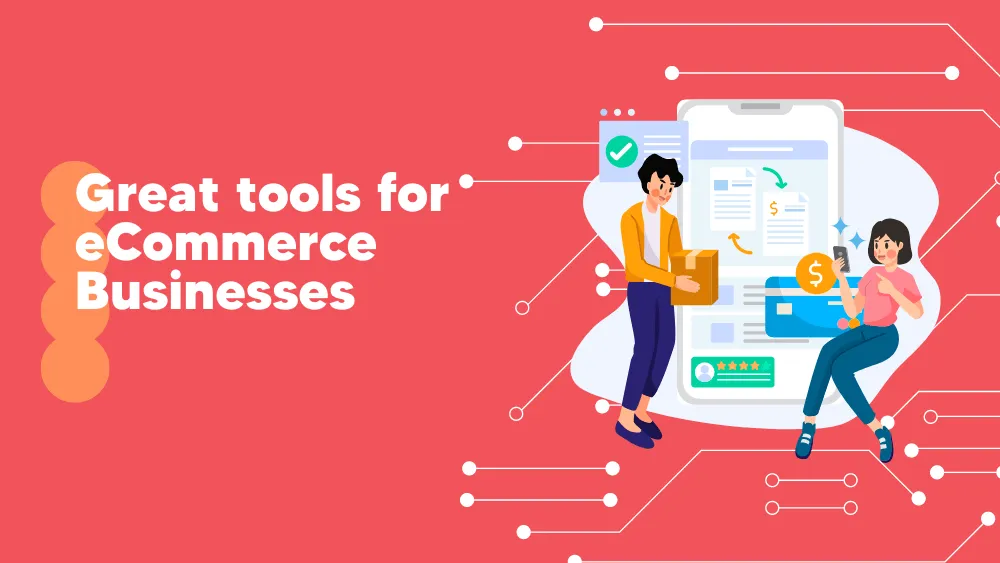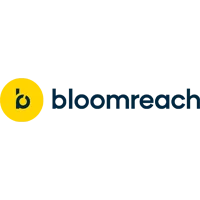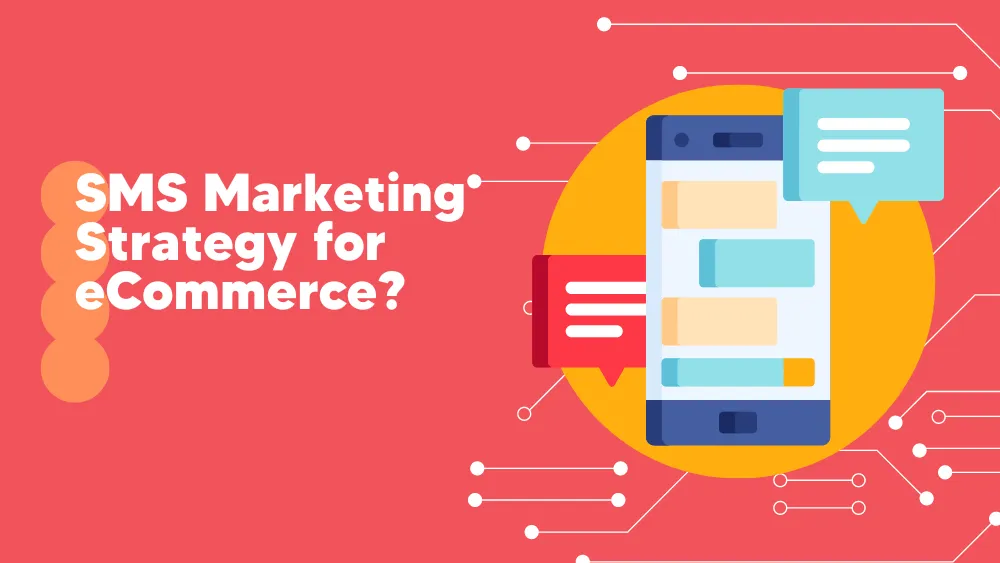
Best eCommerce Software
What is eCommerce Software?
eCommerce software solves the struggles of selling online by providing a streamlined process of managing inventory, payment, orders, and taxes. eCommerce software solutions are created for non-tech people and are easy to use. Moreover, it supports integration with other business processes such as payment gateway, enterprise resource planning, customer relationship management(CRM), accounting software, etc.
A typical eCommerce software contains all the features you need to buy and sell on the web. At the minimum, eCommerce software lets sellers list products for sale and accept payments. However, in the competitive eCommerce marketplace, you’ll find eCommerce solutions that offer way more than the bare minimum.
A feature-rich eCommerce software offers end-to-end management for online retail businesses. You can access eCommerce website builders, customer service infrastructure, and inventory management systems.
eCommerce isn’t all about business to customers only. You can use eCommerce platform software to create B2B(business to business), B2C(Business to customer), and C2B(Customer to Business) platforms where both seller and buyer are equally important. Also, an eCommerce site is customized for maximum product visibility and SEO reach for organic growth.
Compare eCommerce Software
8fig
ThriveCart
2Checkout (now Verifone)
Gelato
Table of Contents
What does eCommerce software do?
An eCommerce software simplifies how you operate your business online business. Modern eCommerce software has all the key features to run an online retail business. These core features include inventory management, product listings, and payment gateway integration. In addition, many eCommerce solution providers now offer customer relationship management and website builders.
To summarize, eCommerce software can do the following:
- Proper inventory management
Any online business needs to be efficient with its product and inventory management. It includes managing product variations based on size, color, and quality. Moreover, it would help if you also managed SKUs. The benefits include the ability to know when stock runs low. Moreover, many eCommerce software also offers automation or can be integrated with automation solutions to re-fill stock before it runs out.
- Customers and order management
eCommerce solutions excel at handling customers’ buying journeys. It starts with a customer placing an order, making payment, and then delivery for all orders without any error. It should also be flexible to handle changes to orders by buyers and sellers. For buyers, it means an easy way to manage their orders, including making quick changes to order quantity or simply checking order status.
Moreover, eCommerce software also needs to manage payments for buyers. That’s why you’ll find it comes with built-in payment solutions or support for third-party payment solutions. Lastly, an eCommerce solution should also manage customer information, offer valid accounts, bills and invoicing, and so on through its core features or third-party add-ons.
- Automated taxation and shipping
Automation can help you cover mundane and repetitive tasks. For example, an eCommerce software solution can automate different taxation and shipping tasks, including sending notification emails/marketing emails, adding sales tax according to customer location, printing shipping labels, etc.
- Marketing
Besides handling all inventory, order, and taxation tasks, an eCommerce platform also offers good marketing features. For example, you can reach more audiences with built-in SEO as you can rank keywords to get traffic directly from search engines or share your products to social media accounts directly from the backend.
- Improved customer experience
eCommerce software offers an excellent experience for both buyers and sellers. However, buyers are highly focused on simplifying the buying experience without hitting any snag(technical or user experience).
Types of eCommerce platforms
eCommerce platforms have multiple types. These types depend on what problem they solve or how they function. These include:
- Open-source
An eCommerce platform follows open-source standards when distributing its source code. However, sellers need hosting to deploy and host the platform. If not, they can also opt for on-premise implementation. The crux here is the need to implement and manage the platform manually. In short, if you have the IT infrastructure and workforce to implement an open-source eCommerce platform, you can choose an open-source eCommerce platform.
The responsibilities include PCI compliance, getting your hosting(on-premise or cloud), setting up bandwidth to properly run the operations, and doing quality assurance for the eCommerce implementation and other integrations(CRM, CMS, ERP, analytics/BI, ESP). Moreover, it would help if you considered developing new features and kept them in the pipeline.
- Software-as-a-service(SaaS)
Open-source eCommerce solutions are free, but their cost is hidden as you need to do its security, maintenance, and licensing yourself — paving the path for SaaS. SaaS is cloud-hosted and provides a more seamless and structured approach to eCommerce software. As a provider manages the infrastructure and the software, you don’t have to worry about development or deployment.
Here, you get a ready-made solution that you can use to create your eCommerce business. In other words, SaaS lets you rent servers to host your business. The benefits include not having to worry about PCI compliance, security, maintenance, etc., as all these are included in their package.
However, SaaS eCommerce services have some disadvantages, including a lack of flexibility and customization. SaaS API solves the flexibility problem but is limited as you cannot access the SaaS platform’s code according to your requirement.
- Open SaaS
Open SaaS solves the problem by providing all the SaaS platform’s features and offering open API, providing flexibility to businesses. BigCommerce follows the Open SaaS model by providing open API and offering plans to host eCommerce businesses. eCommerce business owners looking for flexibility to create custom integration can use Open SaaS without worrying about open-source platforms’ disadvantages.
- Platform-as-a-service(PaaS)
Platform-as-a-service(PaaS) is SaaS with equipment and infrastructure. Here, the provider takes care of both the software and hardware aspect. PaaS is ideal for businesses who want in-house eCommerce but don’t want to deploy their team to take care of eCommerce’s hardware and software side.
The end goal is to have a complete solution for an on-premise solution. However, the main challenge is to connect the existing on-premise processes with an eCommerce solution. PaaS is a good option for small and medium-scale businesses but has a significant cost associated with it, providing value in the long run.
- Commerce-as-a-service(CaaS)/Headless Commerce
Commerce-as-a-service(CaaS) is a new take on eCommerce implementation with increasing API popularity. It solves the cost and resource utilization associated with PaaS and SaaS. It solves the computing and resource utilization associated with PaaS and SaaS. It enables organizations to design user experience and let the cloud handle the back-end functionality.
- On-premise
On-premise eCommerce gives enterprises complete control over their operations. Unlike PaaS, the organization has complete control over the data and the related infrastructure. Everything, including the software and hardware, is run on-premise with complete access to the different aspects of the eCommerce implementation.
Main Benefits of an eCommerce Software
Undoubtedly, eCommerce software brings a lot of benefits. Not only it gives businesses the necessary tools to build an eCommerce site, but it also gives the tools to manage and grow the eCommerce business efficiently. The key benefits that you get by using eCommerce software include:
- Unlimited reach
eCommerce software gives your business the freedom to reach your audience without any boundaries. It solves the biggest drawback of a brick-and-mortar store. You can also set up your logistics or get help from third-party logistics solutions to deliver local and international products. If you’re selling digital products, then you can deliver your product instantly over the internet, considering that you follow the local laws when distributing digital products.
- Multiple Payment methods
One of the main benefits is access to multiple payment options for buyers during checkout. However, many buyers have preferences when using the payment method. Buyers may also get hindered due to the unavailability of certain payment methods and want to choose the one that works for them.
eCommerce software solutions come with multiple payment methods support, including cash on delivery, UPI, credit card, debit card, PayPal, EMIs, and so on. Generally, only one type of payment is supported for an order. However, it can work with coupons, cashback, or platform currency available within the buyer’s account.
- Cart Recovery
Another benefit of using eCommerce software is cart recovery. Buyers show different buying habits, one of which is to leave the cart before making the purchase. And that’s where eCommerce software’s cart recovery features come in. With it, a buyer can start from the left and complete the checkout process. In addition, cart recovery notifies the buyer about the items through email or SMS.
- Faster response to market demands
eCommerce solutions excel at response time to market changes compared to brick/mortar businesses. It is possible because of streamlined delivery or logistic system.
So, buyers can use this system if they want an item faster. Moreover, eCommerce businesses can also understand market demand by allowing users to use the “Notify Me” option for items buyers need. This can enable the business to stock up on items in demand.
- Efficient and easy buying process
If you compare the buying process with brick-and-mortar shops, eCommerce makes it easy for buyers to get items. This is possible because of easy searchability on the site.
- Efficient product and store listing
eCommerce businesses can easily list products or create stores to reach buyers. These product listings can be as detailed as the business wants and provide valuable information required to help buyers make a purchase. This information can include product category, description, images, delivery date, and shipping fee.
Moreover, they can also track the product through product codes such as ASIN or ISBN. Sellers need to ensure that the listings are as high quality as possible with images, product views, product variations, or any other information the buyer uses to make their buying decision.
- Cost reduction
eCommerce is a cheap way to sell products compared to brick-and-mortar. For physical stores, paying multiple fees, including inventory, repairs, and rent, is necessary. It increases the time required to get profits. The online store overcomes this as you don’t have to pay rent to keep your store running. However, you do need to keep hosting, but it is way cheaper than a physical store.
The other benefits worth mentioning include:- Affordable marketing and advertising
- Sites can stay online 24×7 and offer flexibility
- Easily make product comparisons for better purchase decisions for buyers
- Highly navigable through the product catalog
- Get insight into your customers through data
- Better profit margin
Key Features of an eCommerce Software
eCommerce software is a feature-rich solution that solves sellers’ and buyer key pain-point. In the market, you’ll see a wide variety of eCommerce solutions. However, the key features that you should always look at when choosing the eCommerce solution for your online business are:
- Website builder
A good eCommerce solution lets you create a website. This is beneficial for sellers that don’t have any existing websites. The website builder is beneficial for businesses with existing sites as they can use it to make changes to the site. To make development faster, you get professionally-designed templates that let you kickstart your project.
- Automation
Automation is key to saving time doing mundane and repetitive tasks. For eCommerce solutions, it means automating different aspects of buyers’ purchase journey, such as tax and shipping computation. You can also automate pricing depending on the demand and stock availability.
- Search functionality
eCommerce software should have search functionality to improve the user’s buying experience. It lets buyers quickly search for what they’re looking for. In traditional stores, buyers must ask someone for the item or manually find them. eCommerce solves the problem by categorizing and listing products while providing detailed information such as pictures, feature lists, and descriptions.
- Integrations
Integrations enable eCommerce software to be as flexible as possible. For example, you can integrate features and functions such as social media platforms, external payment gateways, CRM, etc. You can also integrate third-party shipping providers to give customers the ability to customize the delivery.
- Mobile-friendly
Internet traffic mainly comes from mobile devices, which impacts platform revenue. So, if a user opens your eCommerce site from a mobile device, the site will automatically fit the buyer’s screen for the optimal experience.
- Central database
eCommerce software makes it easy to manage data as it uses a centralized database for all buyer and seller actions. It eases product retrieval and optimizes the site’s performance which is crucial to driving sales. The different types of data stored include accounting transactions, customer profiles, product listings, payment & shipping information, and browsing history.
- Marketing
eCommerce supports marketing tools to reach your audience. These tools give you the ability to do brand and website promotions. In addition, these tools include SEO optimizations, targeted campaigns, etc.
- Analytics and reporting
eCommerce software tracks everything related to buyers and sellers. It helps you understand your customers, their buying habits, and other insights that let you improve sales. Then, you can use the data to analyze and create reports, improving your strategy for the best returns.
Who can use an eCommerce Software solution?
Anyone who wants to sell online can use an eCommerce software solution. Many eCommerce software solutions in the market aim at beginners. Using these platforms, you can quickly start your eCommerce website and sell online.
On the contrary, you’ll also find eCommerce software aimed at small to medium-scale businesses. Implementing these requires planning and good upfront cost. For enterprises, there are PaaS and on-premise solutions that require more effort to get the project off the ground.
How much does costs eCommerce Software?
eCommerce software costs heavily depend on the scale of the online business you want to implement. As for vendors, you get three to four pricing plans covering beginners to more advanced businesses. However, if you want just to get started with online selling, then eCommerce platforms’ pricing starts as low as $5 per month.
These smaller plans let you sell a limited number of products and are also limited regarding features. On the other hand, the higher plans with the advanced feature can cost you way more and reach $300 per month.
For example, Wix pricing starts at just $16 per month and can reach up to $59 per month. For Shopify, the pricing starts at $29 per month and goes up to $299 per month. Lastly, we have BigCommerce, whose plans start at $29.95 per month. All the providers also come with custom pricing, which suits enterprise needs.
What should you check when buying an eCommerce platform?
Choosing the “right” eCommerce platform is important as it can make or break your business. The key is looking for a complete eCommerce software that covers most of your business needs. It is also vital to learn about your eCommerce needs before you try to find an eCommerce platform that fits your requirement.
To understand your requirement better, you need to list them based on the following things:
Front-end needs: Here, you decide how your site looks and feels. You should also consider the functional aspect, including search, navigation, etc.
Integrations: To ensure smooth operation, you should look at the other business processes you need to integrate with eCommerce. Try to find which processes/services you want to integrate. For example, you can integrate a separate inventory system that takes care of product movements across the different channels.
Customer management: Customer engagement is important, but you must decide how far you want to go. The built-in customer management should work out if you want to keep it basic. However, you need proper customer relationship management with the email marketing feature to create a strong customer relationship.
You should check out other requirements, including security, performance, stability, and mobile support. Once you have a clear requirement, look for the following things in an eCommerce platform.
Platform and hosting ownership: The very first thing is to check ownership. For example, If you choose the SaaS platform, you don’t own platform code but have complete control over your data. On the other hand, businesses choosing open-source eCommerce platforms or headless platforms have better ownership and control, but they need to consider hosting and security aspects. In all cases, you need to check the platform’s service terms to confirm your ownership.
Cost: Once you’re clear about ownership, you need to consider the cost. Each platform has different plans. Also, most offer a free plan or trial, which you can try before deciding on the cost. Generally, lower-priced plans are limited and are good for beginners. However, if you’re trying to build a big eCommerce store, you must go for high-tier plans or ask for custom pricing.
Integration: eCommerce platform doesn’t come with all the features. That’s why it is important to check the integrations supported by the platform. You should ensure that the platform supports popular plugins and integrations for email marketing, accounting, payment & shipping, and digital tools.
Speed and Scalability: If you want to maximize profits, your eCommerce portal should load fast. If it doesn’t, you’ll start losing revenue. Apart from speed, also make sure that the platform can help you scale your business.
Ease of use: The eCommerce platform should be easy to use. The admin should go through the different features and manage them without difficulty.
Security: Without security, you can easily lose trust among your buyers. To ensure that the platform matches the required security, check if it meets Payment Card Industry(PCI) compliance.
Payment Gateways Support: Customers want flexibility when it comes to payment options. That’s why you need an eCommerce platform that supports different payment gateways with the ability to localize the payment process.
In addition, you should also look out for mobile-friendliness and SEO-friendliness.
Other software related to eCommerce Software
The other eCommerce software includes Customer Relationship Management(CRM), Payment Gateways, Inventory Management, SEO tools, security tools, image optimization tools, a reliable host, product shipment management, email management system, and analytics.






















